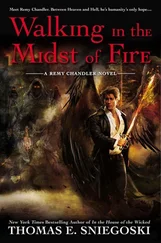Jennifer Worth - In the Midst of Life
Здесь есть возможность читать онлайн «Jennifer Worth - In the Midst of Life» весь текст электронной книги совершенно бесплатно (целиком полную версию без сокращений). В некоторых случаях можно слушать аудио, скачать через торрент в формате fb2 и присутствует краткое содержание. Жанр: Биографии и Мемуары, на английском языке. Описание произведения, (предисловие) а так же отзывы посетителей доступны на портале библиотеки ЛибКат.
- Название:In the Midst of Life
- Автор:
- Жанр:
- Год:неизвестен
- ISBN:нет данных
- Рейтинг книги:3 / 5. Голосов: 1
-
Избранное:Добавить в избранное
- Отзывы:
-
Ваша оценка:
- 60
- 1
- 2
- 3
- 4
- 5
In the Midst of Life: краткое содержание, описание и аннотация
Предлагаем к чтению аннотацию, описание, краткое содержание или предисловие (зависит от того, что написал сам автор книги «In the Midst of Life»). Если вы не нашли необходимую информацию о книге — напишите в комментариях, мы постараемся отыскать её.
In the Midst of Life — читать онлайн бесплатно полную книгу (весь текст) целиком
Ниже представлен текст книги, разбитый по страницам. Система сохранения места последней прочитанной страницы, позволяет с удобством читать онлайн бесплатно книгу «In the Midst of Life», без необходимости каждый раз заново искать на чём Вы остановились. Поставьте закладку, и сможете в любой момент перейти на страницу, на которой закончили чтение.
Интервал:
Закладка:
It was only after four years of this voluntary work that Elisabeth returned to Switzerland, more determined than ever to become a doctor. She had to start night school in order to learn the basics of science from scratch. There was no help from her father or her tutors, who told her to go and be a housewife, a maid, a seamstress - academia was not for girls. But she had been trained in the harsh school of life and she knew the value of persistence. In 1957, at the age of thirty-one, she passed her final examinations and became a country doctor in the mountain villages north of Zürich. It was a happy time.
It is interesting to speculate on how life turns out for each of us, and how chance plays its part. Elisabeth always said it was the hand of God guiding her. If she had not met and fallen in love with a handsome American doctor, she would have remained a contented family doctor in rural Switzerland, probably married to a respectable burger, happy to settle down after the hectic adventures of her youth. Instead, she married Emanuel Ross, went to America, and entered the maelstrom of American hospital medicine. This was where her intellectual life, coloured by her early experiences of suffering, began. She had found her vocation.
Elisabeth had never really wanted to go to America, still less did she want the post of psychiatric resident at Manhattan State Hospital, but it was the only job she could get. She worked with the mentally ill for nearly two years, and learned a great deal about the psychology of the human mind, its dark recesses and closed doors.
One day her chief asked her to examine a man who was supposed to be suffering from psychosomatic paralysis and depression. The man also had an incurable degenerative disorder. Elisabeth examined him, and spoke with him at length. She had seen this state of mind before in the ravaged towns and villages of Europe, and she knew what it meant.
‘The patient is preparing himself to die,’ she reported.
The neurologist not only disagreed, he appeared embarrassed, and ridiculed her diagnosis, saying that the patient just needed the right medication to cure his morbid state of mind. Days later the patient died.
This encounter started Elisabeth thinking, watching, and noting her observations. She saw that most doctors routinely avoided mentioning anything to do with death, and the closer a patient was to dying, the more the doctors distanced themselves. She asked questions of her medical colleagues, but they avoided giving her direct answers, and she gained the impression that very few of them had been present at the bedside at the actual moment of death. ‘That’s not my department; I leave that sort of thing to the nurses,’ was the implied response. She questioned medical students and found that they were taught nothing about death and how best to handle a patient with a terminal illness.
At first she was intrigued, and not a little amused by the head-in-the-sand attitude of her colleagues, and wondered how it would be defined in the school of analytical psychology. But then she began to wonder what effect it had on the patients themselves; and she gravitated towards those who were the most sick and the closest to death. Her experience in war-torn Europe made it easy for her to talk to these people, and she would sit with them for hours. What she discovered, mainly, was the grief of loneliness and isolation. Very often a patient had first learned of the gravity of his condition by the altered behaviour of those around him – avoidance, evaded questions, lack of eye contact. The silence of physicians added to their fears. Relatives and friends, it seemed, were also engaged in a massive game of ‘let’s pretend’, thereby closing the door on empathy and understanding. There is not a single dying human being who does not yearn for love, touch, understanding, and whose heart does not break from the withdrawal of those who should be drawing near.
What she was observing was so at odds with her upbringing in her village in Switzerland, where a dying person was treated with love and compassion, that she thought it must be something peculiar to New York. But in 1962 the family – by now they had two children – moved to Denver, Colorado, and she and her husband got jobs at the University Hospital. Quietly, she continued her observations and discovered, to her astonishment, that the medical and social attitude to the dying was exactly the same in Colorado as in New York. Throughout America, apparently, death was a subject no one wanted to deal with.
‘This is a national sickness, more serious than anything I have seen on the schizophrenic wards,’ she opined.
Her new job was working on liaison between psychiatry and general medicine, covering all disciplines. The team was headed by a professor whose main interest was in measuring the relationship between the mental, emotional and spiritual with the pathology of physical illness. Elisabeth and the professor were on the same wavelength, and she was able to discuss with him the effects that rejection and non-communication had on terminally ill patients.
He was the first doctor with whom she had been able to express her concerns, and he understood, and encouraged her to continue her quest.
The professor was a brilliant and charismatic lecturer, and he drew large crowds to his weekly seminars, at which he discussed with students of all faculties how psychology and psychiatry could be applied to general medicine. One day, in 1964, he called Elisabeth to his office and said that he would soon be travelling to Europe for a period of time, and that he would like Elisabeth to take over his lectures.
‘I don’t follow a syllabus. You can choose your own subject. You have two weeks to prepare,’ he said.
Her first reaction was blind panic. She would never be able to take the place of this brilliant man, and hope to hold the attention of his audience. But it was an honour, and she knew she had to do it. Her subject would be death.
Her thesis was simple: doctors would be more comfortable dealing with death if they understood it better, and if they simply talked about what it was like to die.
She went to the university library to research the subject but found nothing that would help her. There were a few obscure and difficult psychoanalytical treatises, and a few anthropological studies about the death rituals of American Indians, Eskimos, Hindus and Buddhists, but nothing more. She had to write her own lecture, with no precedent and no references.
But a greater problem faced her. The professor’s lectures were two hours long – an hour for the lecture, then a break, and then an hour presenting empirical evidence and taking questions. How on earth could she present empirical evidence to support a thesis on death? It was impossible. Yet without it, her lecture would be a failure.
Elisabeth was still devoting her spare time to dying patients in the hospital, talking with them to try to ease their fears and loneliness. A young girl called Linda impressed her deeply. She was sixteen, and at an advanced stage of leukaemia. The direct and focused way in which she discussed her condition was impressive.
She was comfortable and unembarrassed about it, and suddenly it dawned on Elisabeth that, if Linda could talk to the medical students, she would be the ideal person to tell them what it was like to be dying at the age of sixteen. Linda readily agreed to participate.
On the day of the lecture, Elisabeth was a nervous wreck. She stood on the podium and read from her notes. The students’ behaviour was inexcusable: they chewed gum, chatted, leaned back with their feet up, and sniggered; but, as the lecture drew to its close, their behaviour became more respectful. During the break Elisabeth brought in her brave sixteen-year-old and wheeled her into the centre of the auditorium. The girl was pathetically frail and thin, and she could not stand, but she was nicely dressed and her hair looked pretty. Her clear brown eyes and determined jaw showed that she was perfectly in command of herself.
Читать дальшеИнтервал:
Закладка:
Похожие книги на «In the Midst of Life»
Представляем Вашему вниманию похожие книги на «In the Midst of Life» списком для выбора. Мы отобрали схожую по названию и смыслу литературу в надежде предоставить читателям больше вариантов отыскать новые, интересные, ещё непрочитанные произведения.
Обсуждение, отзывы о книге «In the Midst of Life» и просто собственные мнения читателей. Оставьте ваши комментарии, напишите, что Вы думаете о произведении, его смысле или главных героях. Укажите что конкретно понравилось, а что нет, и почему Вы так считаете.












